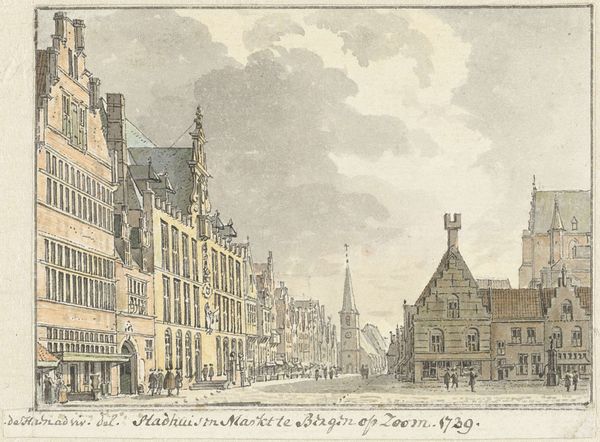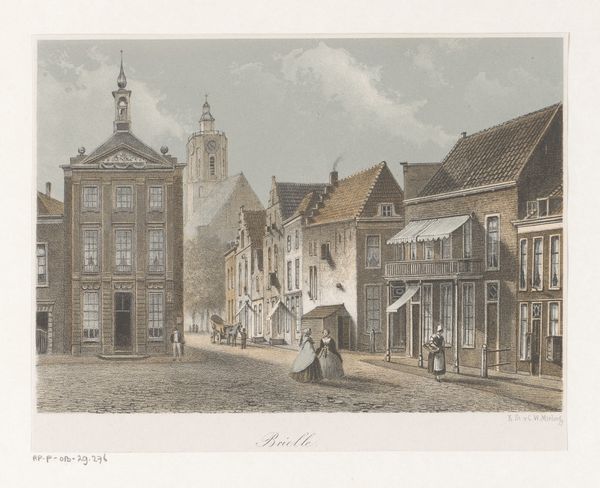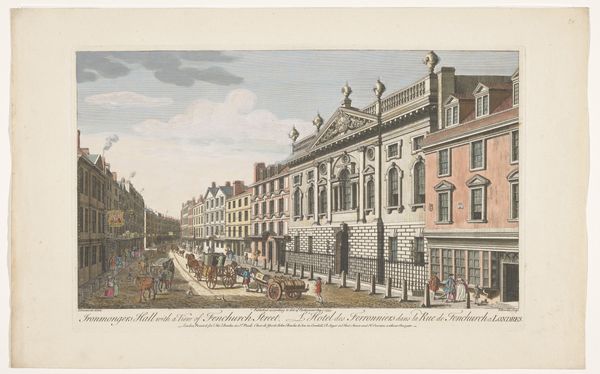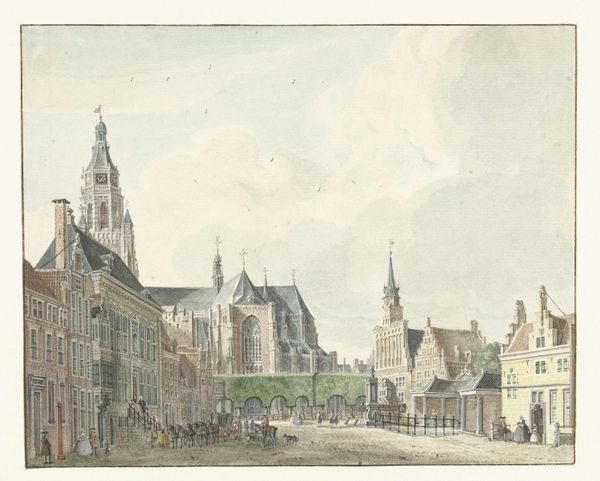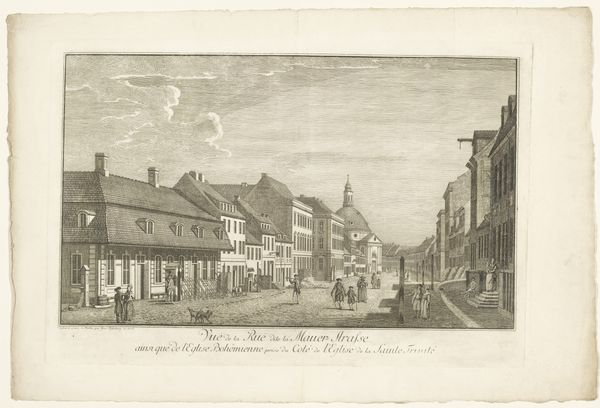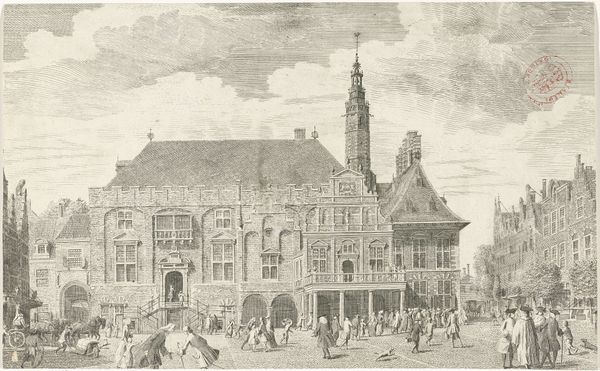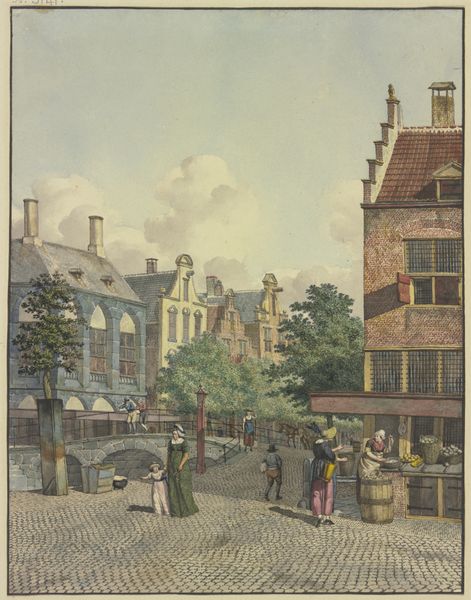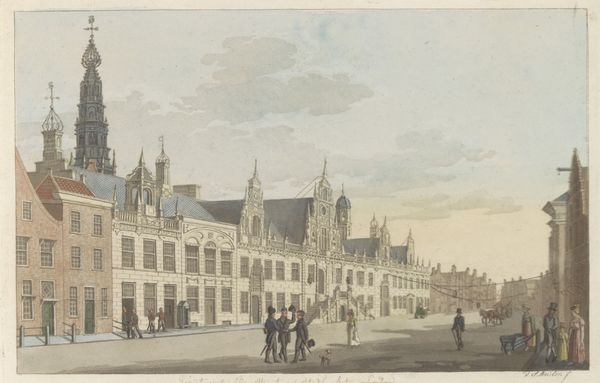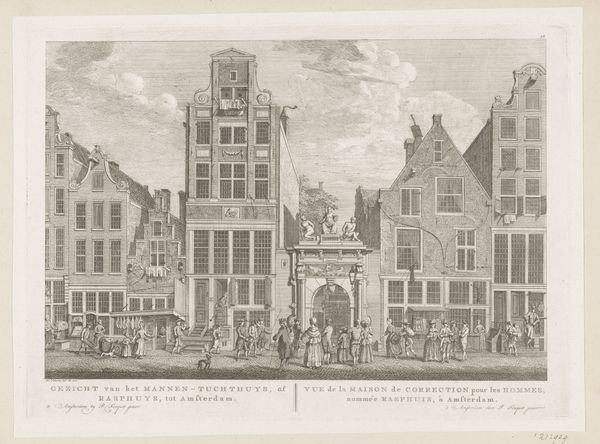
Vismarkt en Grote Kerk te Den Haag, ca. 1790 Possibly 1786 - 1825
0:00
0:00
drawing, print, engraving, architecture
#
drawing
#
neoclacissism
# print
#
architectural drawing
#
architecture drawing
#
cityscape
#
engraving
#
architecture
Dimensions: height 174 mm, width 248 mm
Copyright: Rijks Museum: Open Domain
Carel Frederik Bendorp made this print of the fish market and Grote Kerk in The Hague around 1790. This isn't an etching or engraving, it's an aquatint, a printmaking technique that allows for tonal gradations and a wide range of colors, emulating the effects of watercolor. The aquatint process involves the use of acid to create a textured surface on a metal plate, which then holds ink and is transferred to paper. The materiality of the print is evident in its delicate lines and soft, atmospheric effects. In its time, this type of image would have been created through the labor of skilled artisans who translated Bendorp’s original vision into reproducible form. These prints, tied to commerce and consumption, provide valuable social context. They highlight the relationship between art, labor, and the urban experience of The Hague at the end of the 18th century, underscoring how prints like this democratized access to art, making it available to a broader audience beyond traditional elite circles.
Comments
No comments
Be the first to comment and join the conversation on the ultimate creative platform.

